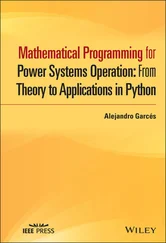Fault Tolerance
Many real-time systems control safety-critical devices in vehicles, hospitals, and power plants, so fault tolerance is frequently an issue. Active replication is sometimes used, but only if it can be done without extensive (and thus time-consuming) protocols to get everyone to agree on everything all the time. Primary-backup schemes are less popular because deadlines may be missed during cutover after the primary fails. A hybrid approach is to follow the leader, in which one machine makes all the decisions, but the others just do what it says to do without discussion, ready to take over at a moment's notice.
In a safety-critical system, it is especially important that the system be able to handle the worst-case scenario. It is not enough to say that the probability of three components failing at once is so low that it can be ignored. Failures are not always independent. For example, during a sudden electric power failure, everyone grabs the telephone, possibly causing the phone system to overload, even though it has its own independent power generation system. Furthermore, the peak load on the system often occurs precisely at the moment when the maximum number of components have failed because much of the traffic is related to reporting the failures. Consequently, fault-tolerant real-time systems must be able to cope with the maximum number of faults and the maximum load at the same time.
Some real-time systems have the property that they can be stopped cold when a serious failure occurs. For instance, when a railroad signaling system unexpectedly blacks out, it may be possible for the control system to tell every train to stop immediately. If the system design always spaces trains far enough apart and all trains start braking more-or-less simultaneously, it will be possible to avert disaster and the system can recover gradually when the power comes back on. A system that can halt operation like this without danger is said to be fail-safe.
Language Support
While many real-time systems and applications are programmed in general-purpose languages such as C, specialized real-time languages can potentially be of great assistance. For example, in such a language, it should be easy to express the work as a collection of short tasks (e.g., lightweight processes or threads) that can be scheduled independently, subject to user-defined precedence and mutual exclusion constraints.
The language should be designed so that the maximum execution time of every task can be computed at compile time. This requirement means that the language cannot support general whileloops. iteration must be done using forloops with constant parameters. Recursion cannot be tolerated either (it is beginning to look like FORTRAN has a use after all). Even these restrictions may not be enough to make it possible to calculate the execution time of each task in advance since cache misses, page faults, and cycle stealing by DMA channels all affect performance, but they are a start.
Real-time languages need a way to deal with time itself. To start with, a special variable, clock, should be available, containing the current time in ticks. However, one has to be careful about the unit that time is expressed in. The finer the resolution, the faster clock will overflow. If it is a 32-bit integer, for example, the range for various resolutions is shown in Fig. 4-27. Ideally, the clock should be 64 bits wide and have a 1 nsec resolution.
| Clock resolution |
Range |
| 1 nsec |
4 seconds |
| 1 µsec |
72 minutes |
| 1 msec |
50 days |
| 1 sec |
136 years |
Fig. 4-27.Range of a 32-bit clock before overflowing for various resolutions.
The language should have a way to express minimum and maximum delays. In Ada®, for example, there is a delay statement that specifies a minimum value that a process must be suspended. However, the actual delay may be more by an unbounded amount. There is no way to give an upper bound or a time interval in which the delay is required to fall.
There should also be a way to express what to do if an expected event does not occur within a certain interval. For example, if a process blocks on a semaphore for more than a certain time, it should be possible to time out and be released. Similarly, if a message is sent, but no reply is forthcoming fast enough, the sender should be able to specify that it is to be deblocked after k msec.
Finally, since periodic events play such a big role in real-time systems, it would be useful to have a statement of the form
every (25 msec) { … }
that causes the statements within the curly brackets to be executed every 25 msec. Better yet, if a task contains several such statements, the compiler should be able to compute what percentage of the CPU time is required by each one, and from these data compute the minimum number of machines needed to run the entire program and how to assign processes to machines.
4.6.3. Real-Time Communication
Communication in real-time distributed systems is different from communication in other distributed systems. While high performance is always welcome, predictability and determinism are the real keys to success. In this section we will look at some real-time communication issues, for both LANs and WANs. Finally, we will examine one example system in some detail to show how it differs from conventional (i.e., non-real-time) distributed systems. Alternative approaches are described in (Malcolm and Zhao, 1994; and Ramanathan and Shin, 1992)
Achieving predictability in a distributed system means that communication between processors must also be predictable. LAN protocols that are inherently stochastic, such as Ethernet, are unacceptable because they do not provide a known upper bound on transmission time. A machine wanting to send a packet on an Ethernet may collide with one or more other machines. All machines then wait a random time and then try again, but these transmissions may also collide, and so on. Consequently, it is not possible to give a worst-case bound on packet transmission in advance.
As a contrast to Ethernet, consider a token ring LAN. Whenever a processor has a packet to send, it waits for the circulating token to pass by, then it captures the token, sends its packet, and puts the token back on the ring so that the next machine downstream gets the opportunity to seize it. Assuming that each of the k machines on the ring is allowed to send at most one n –byte packet per token capture, it can be guaranteed that an urgent packet arriving anywhere in the system can always be transmitted within kn byte times. This is the kind of upper bound that a real-time distributed system needs.
Token rings can also handle traffic consisting of multiple priority classes. The goal here is to ensure that if a high-priority packet is waiting for transmission, it will be sent before any low-priority packets that its neighbors may have. For example, it is possible to add a reservation field to each packet, which can be increased by any processor as the packet goes by. When the packet has gone all the way around, the reservation field indicates the priority class of the next packet. When the current sender is finished transmitting, it regenerates a token bearing this priority class. Only processors with a pending packet of this class may capture it, and then only to send one packet. Of course, this scheme means that the upper bound of kn byte times now applies only to packets of the highest priority class.
An alternative to a token ring is the TDMA (Time Division Multiple Access)protocol shown in Fig. 4-28. Here traffic is organized in fixed-size frames, each of which contains n slots. Each slot is assigned to one processor, which may use it to transmit a packet when its time comes. In this way collisions are avoided, the delay is bounded, and each processor gets a guaranteed fraction of the bandwidth, depending on how many slots per frame it has been assigned.
Читать дальше












